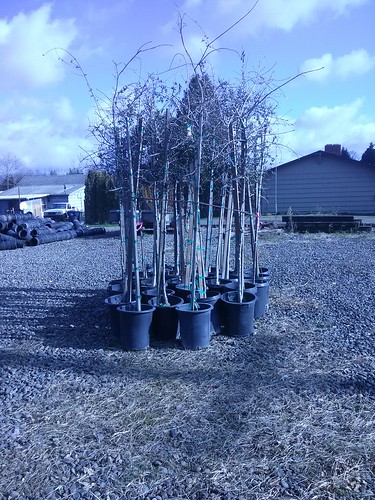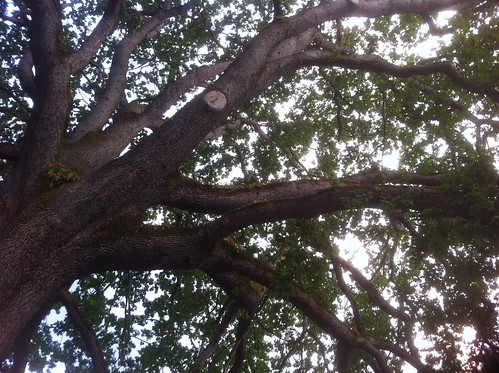Climate Trees: Trees for the 21st Century – Part 1
By Erik Burke
This is the first in a three-part series about Friends of Trees’ new Climate Tree Program, initiated in the Eugene-Springfield area during the 2012-13 planting season.
The times they are a changing—for people and trees. Humans are changing the earth’s climate, and many of the trees we plant in our cities are unlikely to fare well in these changing conditions.

It’s not clear how climate will change in western Oregon. It’s very likely that there will be significant changes in temperature and precipitation, with temperature perhaps rising over the next 40-50 years so that temperature in Eugene-Springfield is similar to areas in northern California.
Changes in precipitation are less clear, as is whether we will see radical changes in ocean currents or the eastern Pacific high pressure system that gives us our annual summer drought. Cities like Chicago are changing the trees they plant in public areas, replacing the trees they have been planting with trees from warmer climates around 500 miles south.
To begin to address these issues, on September 14, 2012, Friends of Trees organized two talks on the topic of “Trees for Eugene-Springfield’s 21st Century Urban Forest.” I presented an initial tree list developed locally to guide species selection. This discussion of trees for the 21st Century is not solely about climate-resilient trees. It is also about shifting the approach to planting trees from an emphasis on ornament and profit, to an emphasis on trees that are more resilient and locally adapted, and provide more ecological services than many currently planted species.
FOT Neighborhood Trees Senior Specialist Kris Day, from FOT’s Portland office, and Jim Gersbach, longtime Friends of Trees volunteer, gave presentations on their work to identify drought-tolerant trees that thrive in our area, plant them, and monitor their success over time. Kris and Jim are part of a Portland-based project called Tomorrow’s Urban Forest (TUF) whose goal is to develop a better understanding of which species of trees are likely to thrive and which are likely to struggle in the Willamette Valley given a warmer and possibly drier future climate.
A major factor for tree selection in the Eugene-Springfield area is the area’s annual summer drought. Significant rainfall rarely occurs locally from late May through September, limiting which trees thrive here without irrigation.

Tree assemblages of the warm period in the area’s history, from 6-10,000 years ago, such as Oregon white oak, valley ponderosa, and incense cedar, are likely to be particularly suited to our area in the 21st century. Trees from northern California are likely to be heat and drought tolerant in our area. Trees from other regions with similar summer dry climate patterns to ours are more likely to thrive in our area than trees from summer wet areas. This means that the best regions to choose trees from that are likely to thrive in our cities are western North America, southern Europe, north Africa, southwestern Australia, and south-central South America.
Given these facts, FOT Lane County developed a provisional three-tier list of trees that are likely to be resilient to climate change and tolerate heat and drought well to help prioritize planting efforts.
Click here to read Part 2 of the Climate Trees series.
–Burke is Director of FOT Lane County
